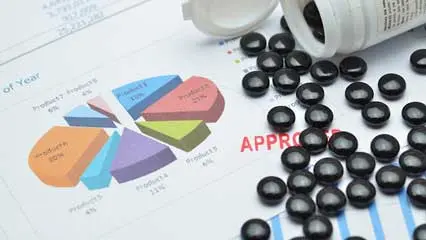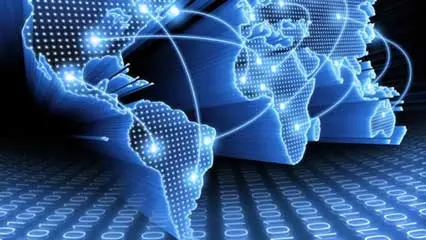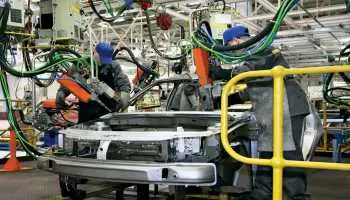
United States Smart Sensors Market Share, Trends, Revenue, CAGR Status, Growth Drivers, Challenges and Future Investment Opportunities Till 2033: SPER Market Research
Category :
Semiconductor and Electronics
Published: Jul-2024
Author: SPER Analysis Team
United States Smart Sensors Market Share, Trends, Revenue, CAGR Status, Growth Drivers, Challenges and Future Investment Opportunities Till 2033: SPER Market Research
United States Smart Sensors Market is projected to be worth USD 18.55 billion by 2033 and is anticipated to surge at a CAGR of 4.81%.
In essence, smart sensors are used to measure various characteristics and provide the data for further processing. Several are frequently combined to form a sophisticated system that offers a multitude of advantages. They are becoming more and more frequent in Internet of Things applications for a variety of uses, including as measuring and displaying sound waveforms, detecting temperature, sensing water vapor concentration, and pressure signals. Real-time monitoring and data analysis are made possible by these sensors' ability to interface with other systems and devices. This improves the responsiveness, accuracy, and efficiency of a variety of applications in industries like healthcare, automotive, industrial automation, and environmental monitoring.
United States Smart Sensors Market Driving Factors and Challenges
Driving Factors- The need for wireless technologies like WAP, GPRS, wireless LAN, and GPS has increased in recent years. Because wires and batteries are more expensive, installing sensors with wired network connectivity is more expensive. By using a wireless wall switch receiver in place of the current wall switch, a wireless occupancy sensor can eliminate the need for wires and batteries. It also removes the need for maintenance expenses. For instance, a security system built on wireless protocols, such Wi-Fi and Zigbee, can be used with a smartphone to monitor and manage security equipment like smoke detectors, window and door locks, indoor and outdoor security cameras, and lighting systems. The need for smart sensors is being driven by the growing need for wireless technology.
Challenges- The need for large sums of money to establish and maintain an integrated, self-monitoring, sustainable, and scalable network of smart sensors has a negative effect on the market for smart sensors. Research and development spending has also been hampered by the recent recession in the European market. Due to the high cost of the sensors' expensive batteries and components, the implementation of smart sensors has been restricted. These batteries have a limited lifespan and run out faster due to the energy consumption of the sensors and the wireless network. In conclusion, the sensors' and wireless link's energy requirements, low radio range, utilization of short-range technology, and short battery life all contribute to these issues.
Request For Free Sample Report @ https://www.sperresearch.com/report-store/united-states-smart-sensors-market.aspx?sample=1
Impact of COVID-19 on United States Smart Sensors Market
The US smart sensor business faced two challenges as a result of the COVID-19 epidemic. Demand fell sharply after lockdowns, especially for traffic management sensors. The pandemic did, however, also highlight how crucial automation and remote data collecting are. This accelerated the use of smart sensors in building management for touchless controls and in healthcare for patient monitoring. The US smart sensor market is anticipated to recover and continue on its long-term growth trajectory, notwithstanding the initial setback.
United States Smart Sensors Market Key Players:
The market study provides market data by competitive landscape, revenue analysis, market segments and detailed analysis of key market players such as ABB Ltd., Analog Devices, Inc., Eaton Corporation Plc, Honeywell International Inc., Infineon Technologies, Microchip Technology Inc., NXP Semiconductors N.V., ON Semiconductor Corporation, Rockwell Automation, Inc., Texas Instruments Incorporated, Others.
For More Information about this Report @ https://www.sperresearch.com/report-store/united-states-smart-sensors-market.aspx
United States Smart Sensors Market Segmentation:
By Type: Based on the Type, United States Smart Sensors Market is segmented as; Flow Sensors, Image Sensors, Position Sensors, Pressure Sensors, Temperature Sensors.
By Technology: Based on the Technology, United States Smart Sensors Market is segmented as; MEMS, CMOS, Optical Spectroscopy.
By Component: Based on the Component, United States Smart Sensors Market is segmented as; Analog to Digital Converters, Digital to Analog Converters, Amplifiers.
By Application: Based on the Application, United States Smart Sensors Market is segmented as; Aerospace and Defence, Automotive and Transportation, Healthcare, Industrial Automation, Others.
By Region: This research also includes data for Northern, Southern, Western, Eastern.
This study also encompasses various drivers and restraining factors of this market for the forecast period. Various growth opportunities are also discussed in the report.
Would you like to view the sample pages?
Get Sample PagesExplore Related Reports
Domains Served
Our Global Clients
Our data-driven insights have influenced the strategy of 200+ reputed companies across the globe.




































